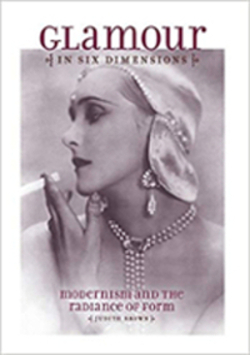Glamour is an alluring but elusive concept. We most readily associate it with fashion, industrial design, and Hollywood of the Golden Age, and yet it also shaped the language and interests of high modernism. In Glamour in Six Dimensions, Judith Brown looks at the historical and aesthetic roots of glamour in the early decades of the twentieth century, arguing that glamour is the defining aesthetic of modernism. In the clean lines of modernism she finds the ideal conditions for glamour-blankness, polish, impenetrability, and the suspicion of emptiness behind it all.
Brown focuses on several cultural products that she argues helped to shape glamour's meanings: the most significant perfume of the twentieth century, Chanel No. 5; the idea of the Jazz Age and its ubiquitous cigarette; the celebrity photograph; the staging of primitivism; and the invention of a shimmering plastic called cellophane. Alongside these artifacts, she takes up the development, refinement, and analysis of glamour in Anglo-American poetry, film, fiction, and drama of the period. Glamour in Six Dimensions thus asks its reader to see the proximity between the vernacular and elite cultures of modernism, and particularly how glamour was animated by artists working at the crossroads of the mundane and the extraordinary: Wallace Stevens, F. Scott Fitzgerald, Virginia Woolf, Josephine Baker, D. H. Lawrence, Gertrude Stein, Nella Larsen, and others.

 The College of Arts
The College of Arts